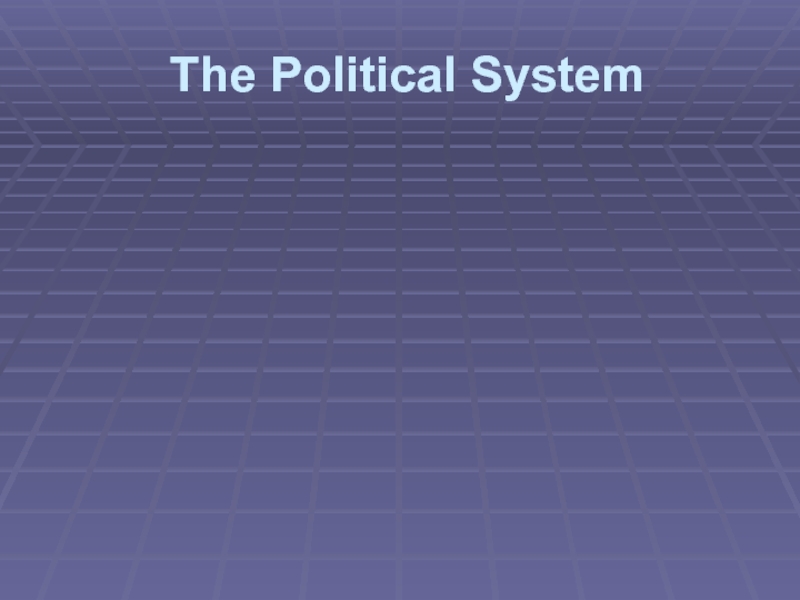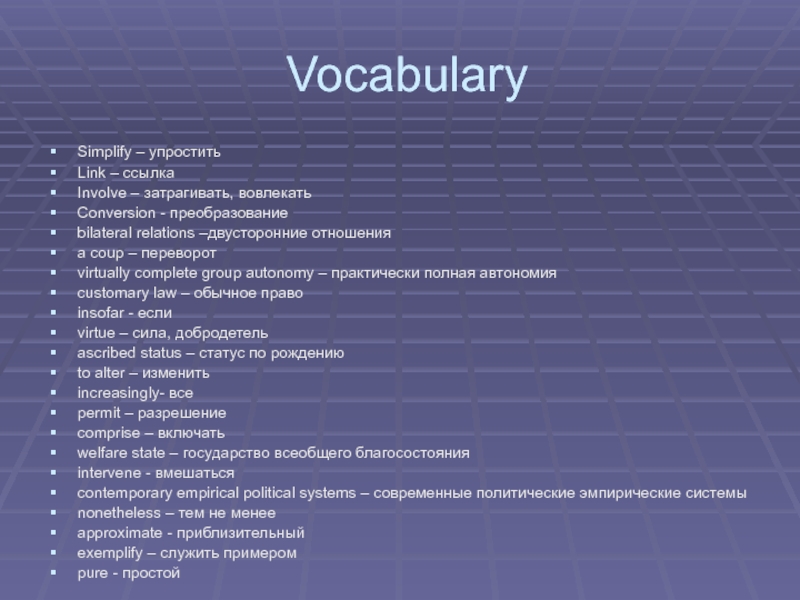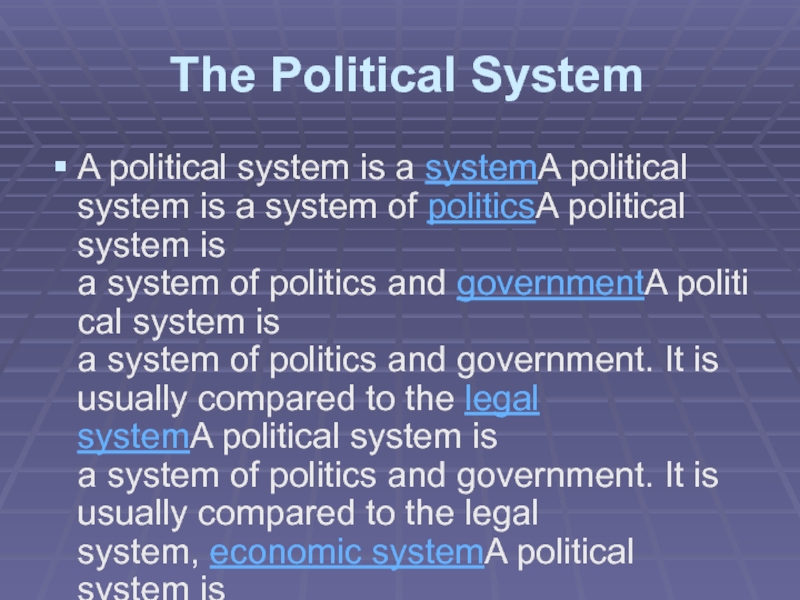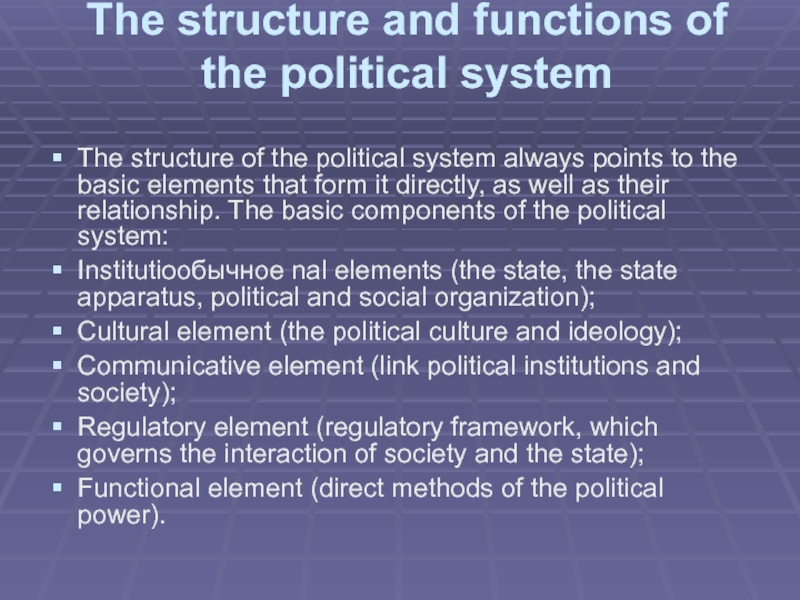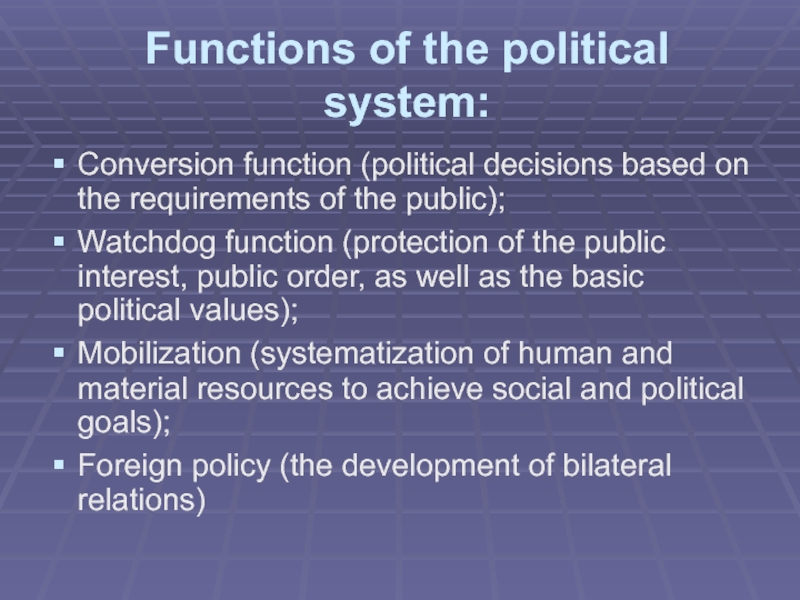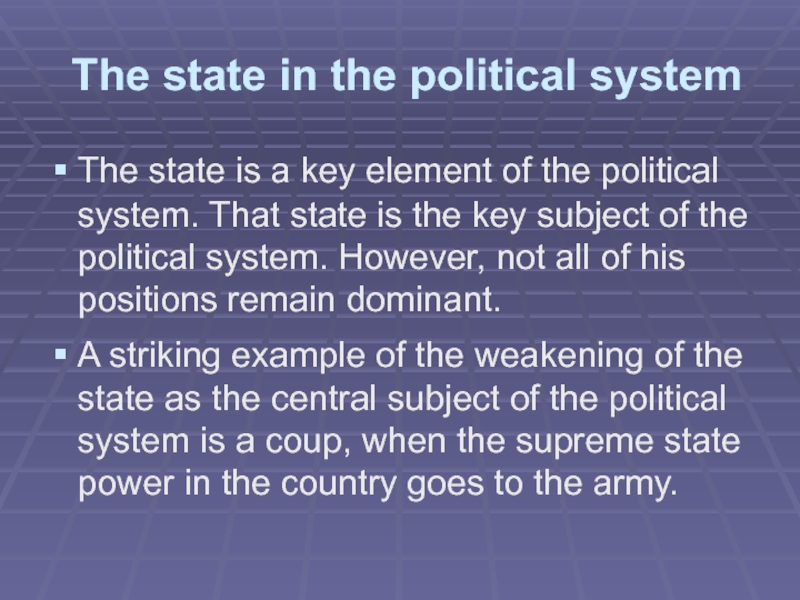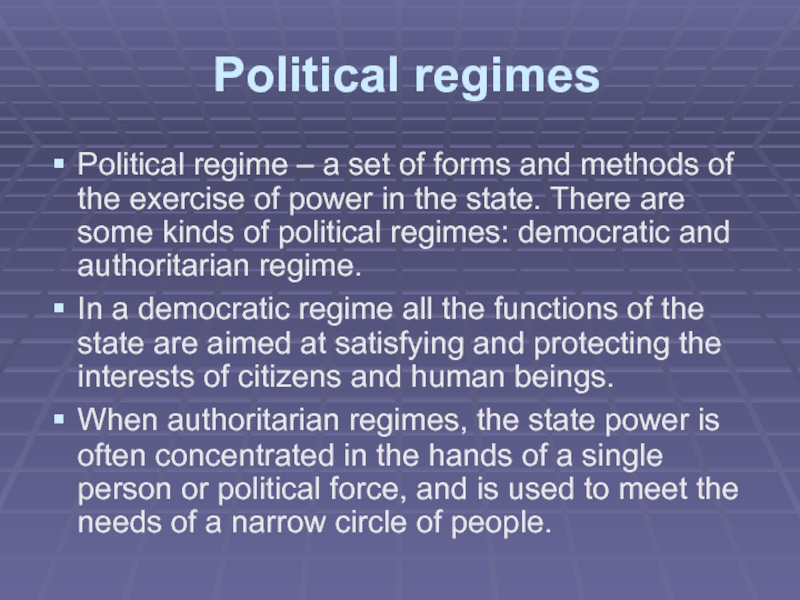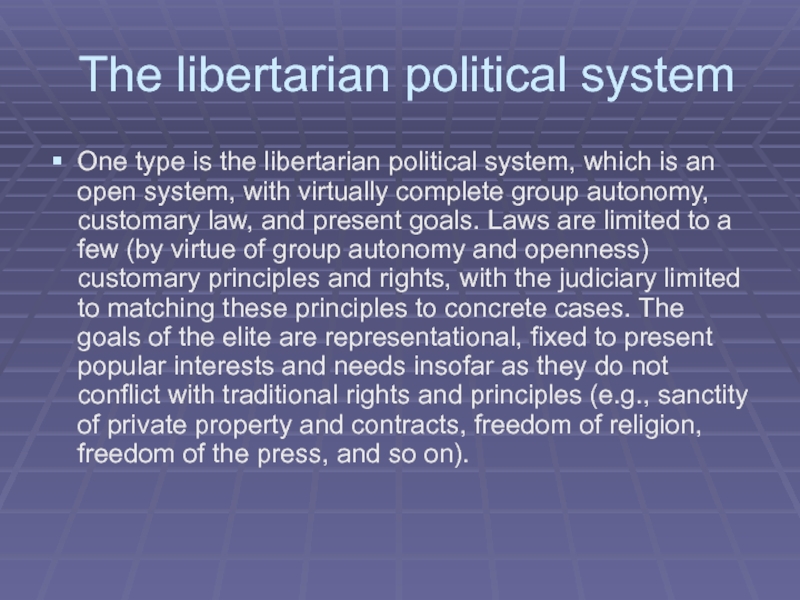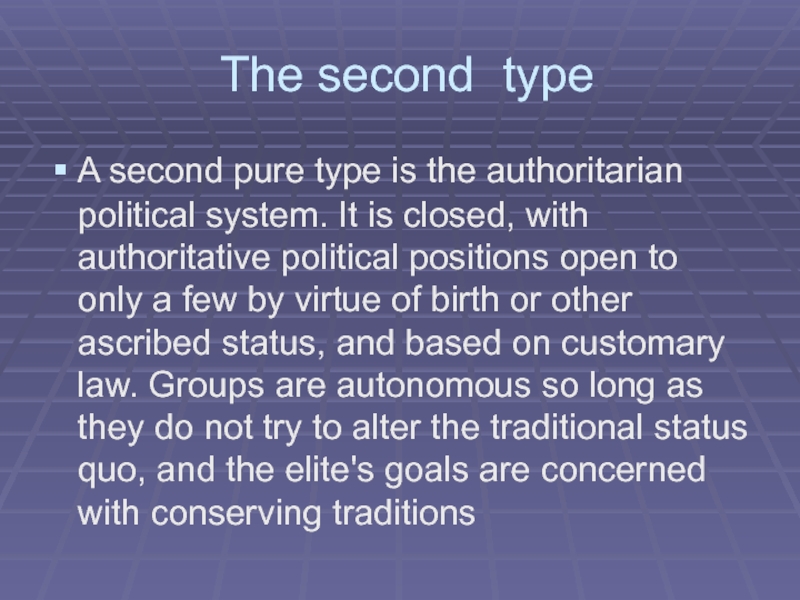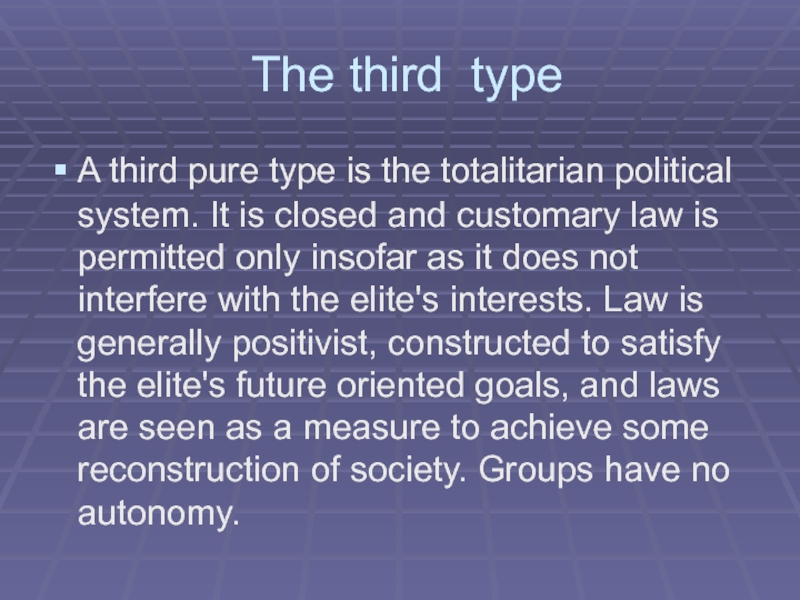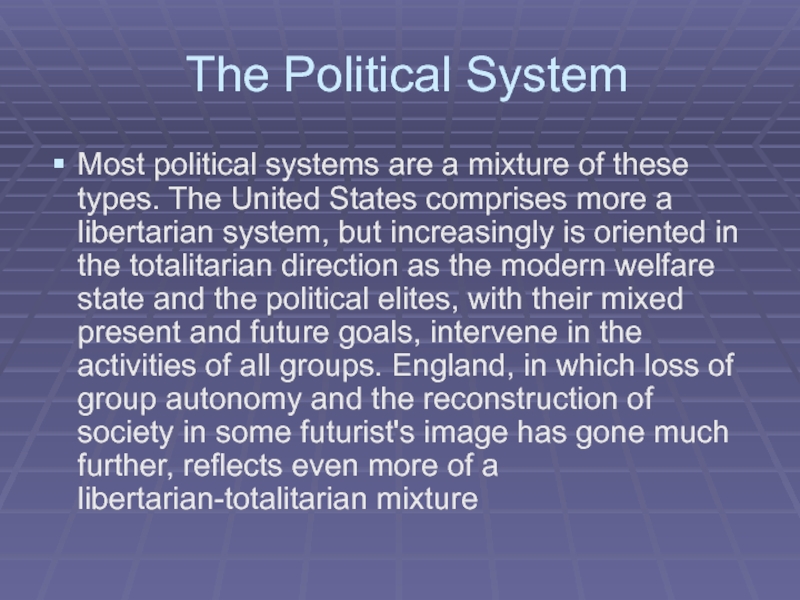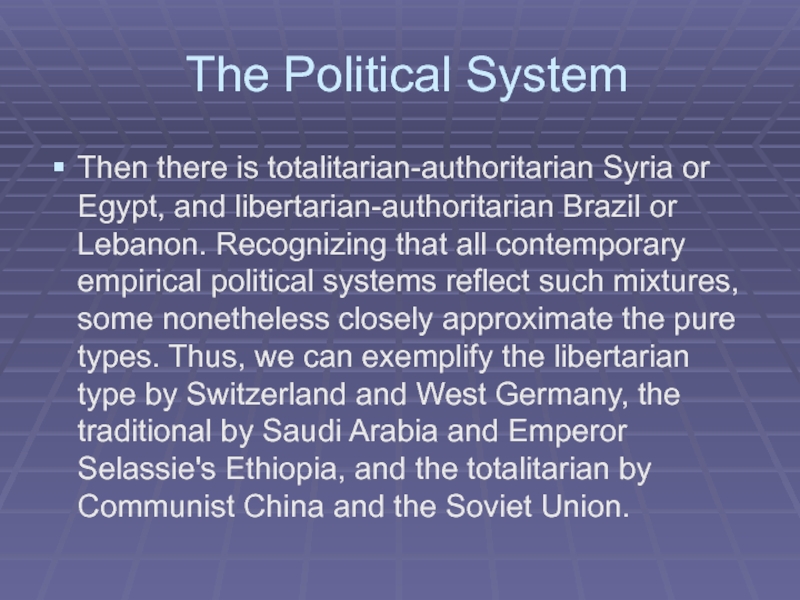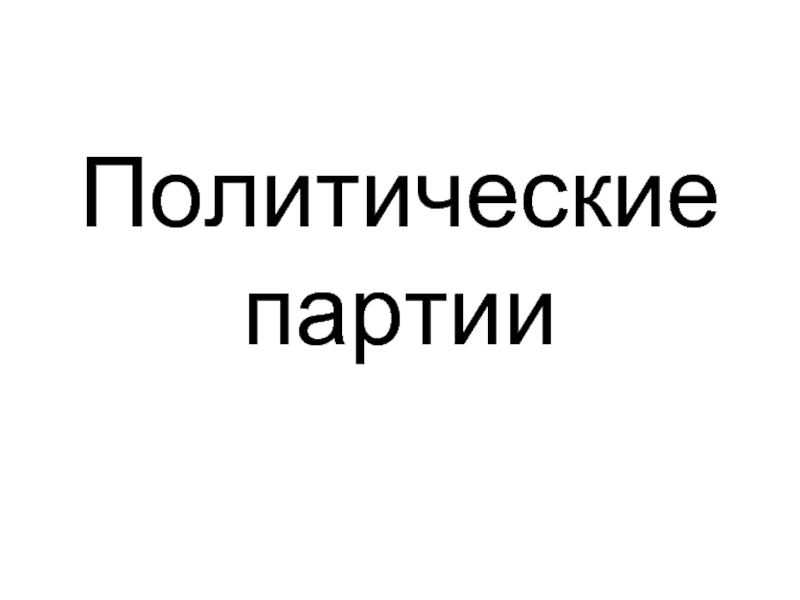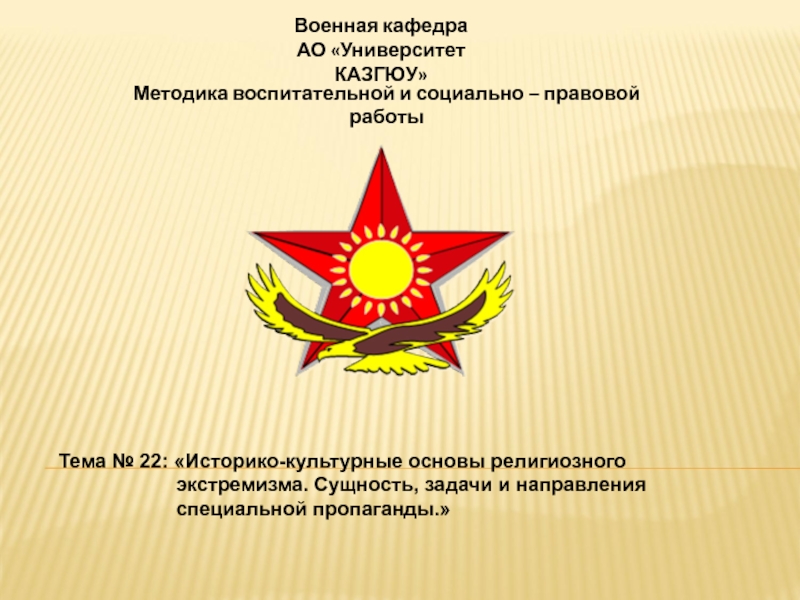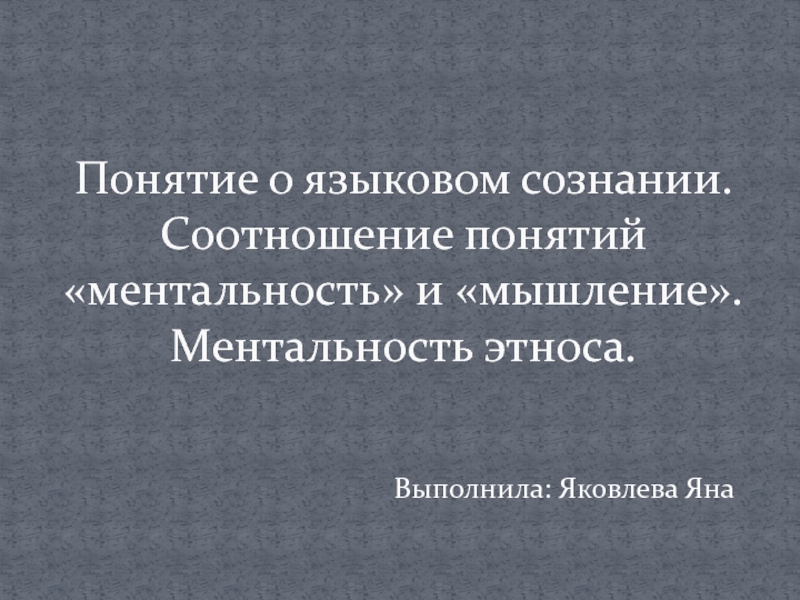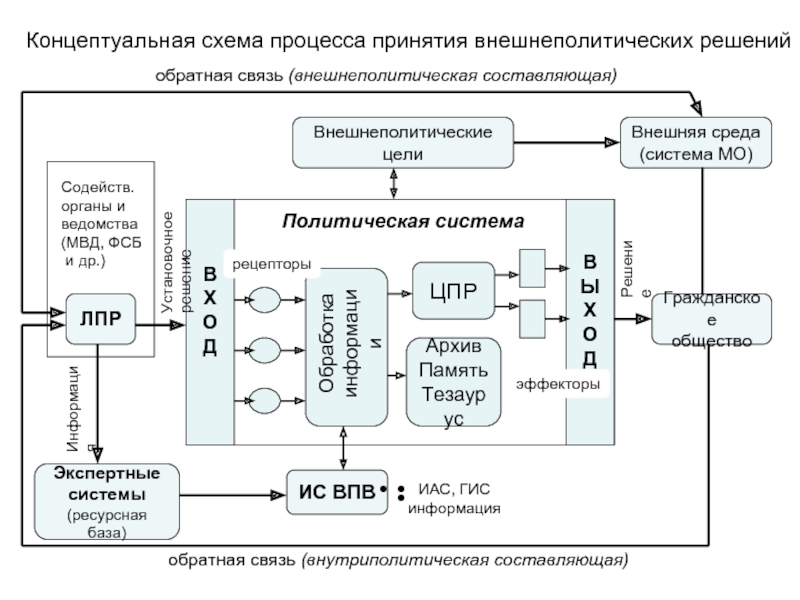- Главная
- Разное
- Дизайн
- Бизнес и предпринимательство
- Аналитика
- Образование
- Развлечения
- Красота и здоровье
- Финансы
- Государство
- Путешествия
- Спорт
- Недвижимость
- Армия
- Графика
- Культурология
- Еда и кулинария
- Лингвистика
- Английский язык
- Астрономия
- Алгебра
- Биология
- География
- Детские презентации
- Информатика
- История
- Литература
- Маркетинг
- Математика
- Медицина
- Менеджмент
- Музыка
- МХК
- Немецкий язык
- ОБЖ
- Обществознание
- Окружающий мир
- Педагогика
- Русский язык
- Технология
- Физика
- Философия
- Химия
- Шаблоны, картинки для презентаций
- Экология
- Экономика
- Юриспруденция
The political system. (Lesson 4) презентация
Содержание
- 1. The political system. (Lesson 4)
- 2. Vocabulary Simplify – упростить Link – ссылка
- 3. The Political System A political system is a systemA political
- 4. The structure and functions of the political
- 5. Functions of the political system: Conversion function
- 6. The state in the political system The
- 7. Political regimes Political regime – a set
- 8. The libertarian political system One type is
- 9. The second type A second pure type
- 10. The third type A third pure
- 11. The Political System Most political systems are
- 12. The Political System Then there is totalitarian-authoritarian
Слайд 2Vocabulary
Simplify – упростить
Link – ссылка
Involve – затрагивать, вовлекать
Conversion - преобразование
bilateral relations
–двусторонние отношения
a coup – переворот
virtually complete group autonomy – практически полная автономия
customary law – обычное право
insofar - если
virtue – сила, добродетель
ascribed status – статус по рождению
to alter – изменить
increasingly- все
permit – разрешение
comprise – включать
welfare state – государство всеобщего благосостояния
intervene - вмешаться
contemporary empirical political systems – современные политические эмпирические системы
nonetheless – тем не менее
approximate - приблизительный
exemplify – служить примером
pure - простой
a coup – переворот
virtually complete group autonomy – практически полная автономия
customary law – обычное право
insofar - если
virtue – сила, добродетель
ascribed status – статус по рождению
to alter – изменить
increasingly- все
permit – разрешение
comprise – включать
welfare state – государство всеобщего благосостояния
intervene - вмешаться
contemporary empirical political systems – современные политические эмпирические системы
nonetheless – тем не менее
approximate - приблизительный
exemplify – служить примером
pure - простой
Слайд 3The Political System
A political system is a systemA political system is a system of politicsA political system is a system of politics and governmentA political system is
a system of politics and government. It is usually compared to the legal systemA political system is a system of politics and government. It is usually compared to the legal system, economic systemA political system is a system of politics and government. It is usually compared to the legal system, economic system, cultural systemA political system is a system of politics and government. It is usually compared to the legal system, economic system, cultural system, and other social systems. However, this is a very simplified view of a much more complex system of categories involving the questions of who should have authority and what the government's influence on its people and economy should be.
Слайд 4The structure and functions of the political system
The structure of the
political system always points to the basic elements that form it directly, as well as their relationship. The basic components of the political system:
Institutioобычное nal elements (the state, the state apparatus, political and social organization);
Cultural element (the political culture and ideology);
Communicative element (link political institutions and society);
Regulatory element (regulatory framework, which governs the interaction of society and the state);
Functional element (direct methods of the political power).
Institutioобычное nal elements (the state, the state apparatus, political and social organization);
Cultural element (the political culture and ideology);
Communicative element (link political institutions and society);
Regulatory element (regulatory framework, which governs the interaction of society and the state);
Functional element (direct methods of the political power).
Слайд 5Functions of the political system:
Conversion function (political decisions based on the
requirements of the public);
Watchdog function (protection of the public interest, public order, as well as the basic political values);
Mobilization (systematization of human and material resources to achieve social and political goals);
Foreign policy (the development of bilateral relations)
Watchdog function (protection of the public interest, public order, as well as the basic political values);
Mobilization (systematization of human and material resources to achieve social and political goals);
Foreign policy (the development of bilateral relations)
Слайд 6The state in the political system
The state is a key element
of the political system. That state is the key subject of the political system. However, not all of his positions remain dominant.
A striking example of the weakening of the state as the central subject of the political system is a coup, when the supreme state power in the country goes to the army.
A striking example of the weakening of the state as the central subject of the political system is a coup, when the supreme state power in the country goes to the army.
Слайд 7Political regimes
Political regime – a set of forms and methods of
the exercise of power in the state. There are some kinds of political regimes: democratic and authoritarian regime.
In a democratic regime all the functions of the state are aimed at satisfying and protecting the interests of citizens and human beings.
When authoritarian regimes, the state power is often concentrated in the hands of a single person or political force, and is used to meet the needs of a narrow circle of people.
In a democratic regime all the functions of the state are aimed at satisfying and protecting the interests of citizens and human beings.
When authoritarian regimes, the state power is often concentrated in the hands of a single person or political force, and is used to meet the needs of a narrow circle of people.
Слайд 8The libertarian political system
One type is the libertarian political system, which
is an open system, with virtually complete group autonomy, customary law, and present goals. Laws are limited to a few (by virtue of group autonomy and openness) customary principles and rights, with the judiciary limited to matching these principles to concrete cases. The goals of the elite are representational, fixed to present popular interests and needs insofar as they do not conflict with traditional rights and principles (e.g., sanctity of private property and contracts, freedom of religion, freedom of the press, and so on).
Слайд 9The second type
A second pure type is the authoritarian political system.
It is closed, with authoritative political positions open to only a few by virtue of birth or other ascribed status, and based on customary law. Groups are autonomous so long as they do not try to alter the traditional status quo, and the elite's goals are concerned with conserving traditions
Слайд 10The third type
A third pure type is the totalitarian political
system. It is closed and customary law is permitted only insofar as it does not interfere with the elite's interests. Law is generally positivist, constructed to satisfy the elite's future oriented goals, and laws are seen as a measure to achieve some reconstruction of society. Groups have no autonomy.
Слайд 11The Political System
Most political systems are a mixture of these types. The
United States comprises more a libertarian system, but increasingly is oriented in the totalitarian direction as the modern welfare state and the political elites, with their mixed present and future goals, intervene in the activities of all groups. England, in which loss of group autonomy and the reconstruction of society in some futurist's image has gone much further, reflects even more of a libertarian-totalitarian mixture
Слайд 12The Political System
Then there is totalitarian-authoritarian Syria or Egypt, and libertarian-authoritarian
Brazil or Lebanon. Recognizing that all contemporary empirical political systems reflect such mixtures, some nonetheless closely approximate the pure types. Thus, we can exemplify the libertarian type by Switzerland and West Germany, the traditional by Saudi Arabia and Emperor Selassie's Ethiopia, and the totalitarian by Communist China and the Soviet Union.
